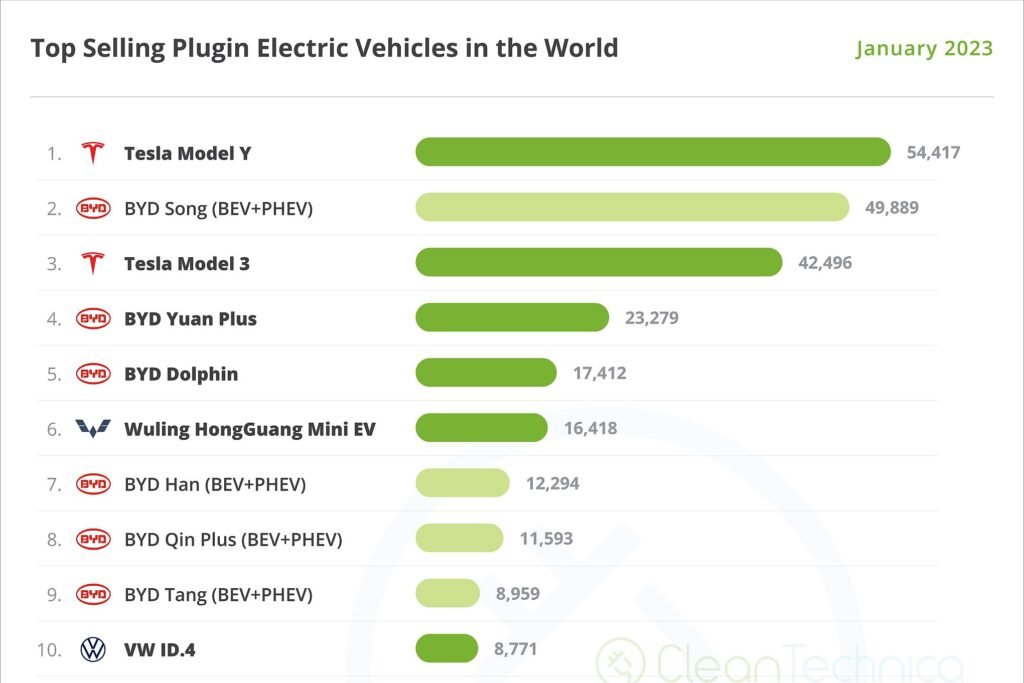The Tesla Model Y has reclaimed first place in the electric car market. In January, registrations increased 10% year on year (YoY) to almost 662,000 units. The Chinese market was the primary driver of expansion.

In terms of market share, 2023 began with plugin cars accounting for 11% of the global auto market (7.6% BEV). While this is lower than last year’s final figure of 14% (10% BEV), we should keep in mind that January is a hangover month, particularly in China, where EV subsidies ended at the end of December, but also in Germany, another major market, where BEV subsidies were reduced and PHEV subsidies were eliminated entirely.
The worldwide market continued to expand, due to markets such as the United States (+118% year on year), Belgium (+75%), Japan (+104%! ), India (+256%!! ), and Australia (+352%!!!) being on the upswing.
Last month, BEVs increased by 5% year on year, the slowest rate since the COVID-affected month of June 2020, while PHEVs increased by 21%, owing mostly to the more PHEV-friendly China market.

The Model Y led the race from the start, achieving its greatest performance in the first month of a quarter. The BYD Song is the runner-up, beginning the year in the same place it concluded the previous one.
The Tesla Model 3 had a strong month as well, starting the year two slots higher than its #5 position in January 2022. It will be fascinating to see how much of a negative impact the planned Model 3 update will have on demand.

January saw BYD win the monthly manufacturer title, thanks to 143,000 registrations, ending with a comfortable lead of over 40,000 units over runner-up Tesla.
But the most striking aspect of these two in January was that both increased their score compared to January 2022, by about 50,000 units each! No one could really compete with this, with the 3rd best score in this metric, made by … Nissan.
There are indicators that production limitations may lessen during the year, so we may finish up at approximately 20% (15% BEV) this year. That would firmly place the global car market in the Disruption Zone – in 2023!
This story is based on an article in Clean Technica; edited by Clean-Future Team






